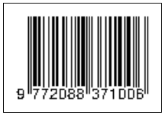Kelas Cendekia Versi Mobile yang Terintegrasi dengan Sistem Rekomendasi
Nur Ridho Abdurrahmansyah(1*), Muhammad Idham Ananta Timur(2)
(1) Prodi Elektronika dan Instrumentasi, Jurusan Ilmu Komputer dan Elektronika, FMIPA UGM
(2) Departemen Ilmu Komputer dan Elektronika, FMIPA UGM, Yogyakarta
(*) Corresponding Author
Abstract
Urgency usefulness of online learning system based on social constructivism which is the mobile virtual classroom learning philosophy is of concern, because the system is built on the pattern of reciprocity between users in order to produce the most quality materials see the absence of a system that provides online learning for it. Content of lecture materials that have been divided into certain categories are processed into virtual versions and delivered lightly. The recommendation system is designed to respond users who have rated it by providing good quality course material. Software is created with Unity Engine and incorporated the recommended system protocol with data stored in a scholarly research database. The recommendation system implemented is the items based collaborative filtering with the specification of training data used are 401 rating data, 51 records and 17 users. With sparsity data training amounted to 53.74%, tested the prediction accuracy resulted RMSE 0.91523 and the accuracy of 81.69%. The mobile version of virtual class that has been planted with recommendation system is tried and tested on several brands of android smartphone. Results obtained on the questionnaire resulted in a rating of 4,762 on performance and 4,572 against the intellectual class software interface. Whereas the level of user enthusiasm for the virtual class reaches 4,0588 on a scale of 1 to 5.
Keywords
Full Text:
PDFReferences
[1] A. S. Wardana, “Collaborative Filtering Recommender System Pada Virtual 3D Kelas Cendekia,” Universitas Gadjah Mada, 2017.
[2] L. S. Vygotsky, “Mind in Society: The Development of Higher Psychological Processes,” Harvard Univ. Press, 1978.
[3] S. H.-J. Liu and Y.-J. Lan, “Social Constructivist Approach to Web-Based EFL Learning: Collaboration, Motivation, and Perception on the Use of Google Docs,” Int. Forum Educ. Technol. Soc., vol. 19, no. 1, pp. 171–186, 2016.
[4] M. Tam, “Constructivism, Instructional Design, and Technology: Implications for Transforming Distance Learning,” Int. Forum Educ. Technol. Soc., vol. 3, no. 2, pp. 50–60, 2000.
[5] R. A. Ramadan, H. Hagras, M. Nawito, A. El Faham, and B. Eldesouky, “The intelligent classroom: Towards an educational ambient intelligence testbed,” Proc. - 2010 6th Int. Conf. Intell. Environ. IE 2010, pp. 344–349, 2010.
[6] R. I. Alhaqq and A. Harjoko, “Pengolahan Citra Digital untuk Keyboard Virtual Sebagai Antarmuka pada Aplikasi Berbasis Web 1,” IJEIS, vol. 5, no. 2, 2015.
[7] H. Islahudin, “Sistem rekomendasi bahan ajar untuk elearning,” in Seminar Nasional Aplikasi Teknologi Informasi 2006 (SNATI 2006), 2006, no. Juni, pp. 125–130.
[8] C. Allmacher, M. Dudczig, P. Klimant, and M. Putz, “Virtual Prototyping Technologies Enabling Resource-Efficient and Human-Centered Product Development,” Sci. Direct, vol. 21, no. 2017, pp. 749–756, 2018.
[9] A. Robertson, “Unity officially releases its new game engine: Unity 5,” San Francisco, CA: Gamasutra, 2015. [Online]. Available: https://www.theverge.com/2015/3/3/8142099/unity-5-engine-release.
[10] D. Takahashi, “John Riccitiello sets out to identify the engine of growth for Unity Technologies (interview),” Interview with Dean Takahashi, 2014. [Online]. Available: https://venturebeat.com/2014/10/23/john-riccitiello-sets-out-to-identify-the-engine-of-growth-for-unity-technologies-interview/.
[11] D. Sánchez-Moreno, A. B. Gil González, M. D. Muñoz Vicente, V. F. López Batista, and M. N. Moreno García, “A collaborative filtering method for music recommendation using playing coefficients for artists and users,” Expert Syst. Appl., vol. 66, pp. 234–244, 2016.
[12] A. Sanchez-Picot, D. Martin, D. S. De Rivera, B. Bordel, and T. Robles, “Modeling and simulation of interactions among people and devices in ambient intelligence environments,” Proc. - IEEE 30th Int. Conf. Adv. Inf. Netw. Appl. Work. WAINA 2016, pp. 784–789, 2016.
[13] S. Papadakis, M. Kalogiannakis, and N. Zaranis, “Computers & Education Educational apps from the Android Google Play for Greek preschoolers : A systematic review,” Comput. Educ., vol. 116, pp. 139–160, 2018.
[14] K. Xu et al., “Knowle dge-Base d Systems Improving user recommendation by extracting social topics and interest topics of users in uni-directional social networks,” Elsevier, vol. 140, pp. 120–133, 2018.
[15] S. Yoon, S. Kim, and S. Park, “C-Rank : A link-based similarity measure for scientific literature databases,” Elsevier, vol. 326, pp. 25–40, 2016.
[16] F. Farnoud, O. Milenkovic, and G. J. Puleo, “Computing similarity distances between rankings,” Discret. Appl. Math., vol. 232, pp. 157–175, 2017.
[17] J. Saint-charles and P. Mongeau, “Social influence and discourse similarity networks in workgroups,” Soc. Networks, vol. 52, pp. 228–237, 2018.
[18] D. Nebel, M. Kaden, A. Villmann, and T. Villmann, “Neurocomputing Types of ( dis- ) similarities and adaptive mixtures thereof for improved classification learning,” Neurocomputing, vol. 268, pp. 42–54, 2017.
[19] X. Chen, “Trend Prediction of Internet Public Opinion based on Collaborative Filtering,” pp. 583–588, 2016.
[20] L. T. Ponnam, S. D. Punyasamudram, S. N. Nallagulla, and S. Yellamati, “Movie Recommender System Using Item Based Collaborative Filtering Technique,” IEEE, 2016.
[21] T. Ha and S. Lee, “Item-network-based collaborative filtering : A personalized recommendation method based on a user ’ s item network,” Elsevier, vol. 53, pp. 1171–1184, 2017.
[22] R. K. Ladioktaviagusdi and R. Sumiharto, “Implementasi Kontrol Model Prediksi Berbasis ANFIS Pada Mesin Penghasil Uap Air 1,” IJEIS, vol. 5, no. 1, 2015.
[23] T. Segaran, Programming Collective Intelligence, First Edit. O’reilly, 2007.
[24] M. H. A. B. Sharatun, “Implementasi Sistem Rekomendasi untuk Mengintegrasikan Kelas Cendekia Nyata dan Virtual,” Universitas Gadjah Mada, 2017.
[25] B. E. Prasetyo, “Sistem Rekomendasi Collaborative Filtering Berbasis Voice Rating,” Universitas Gadjah Mada, 2017.
Article Metrics
Refbacks
- There are currently no refbacks.
Copyright (c) 2018 IJEIS (Indonesian Journal of Electronics and Instrumentation Systems)

This work is licensed under a Creative Commons Attribution-ShareAlike 4.0 International License.
View My Stats1







